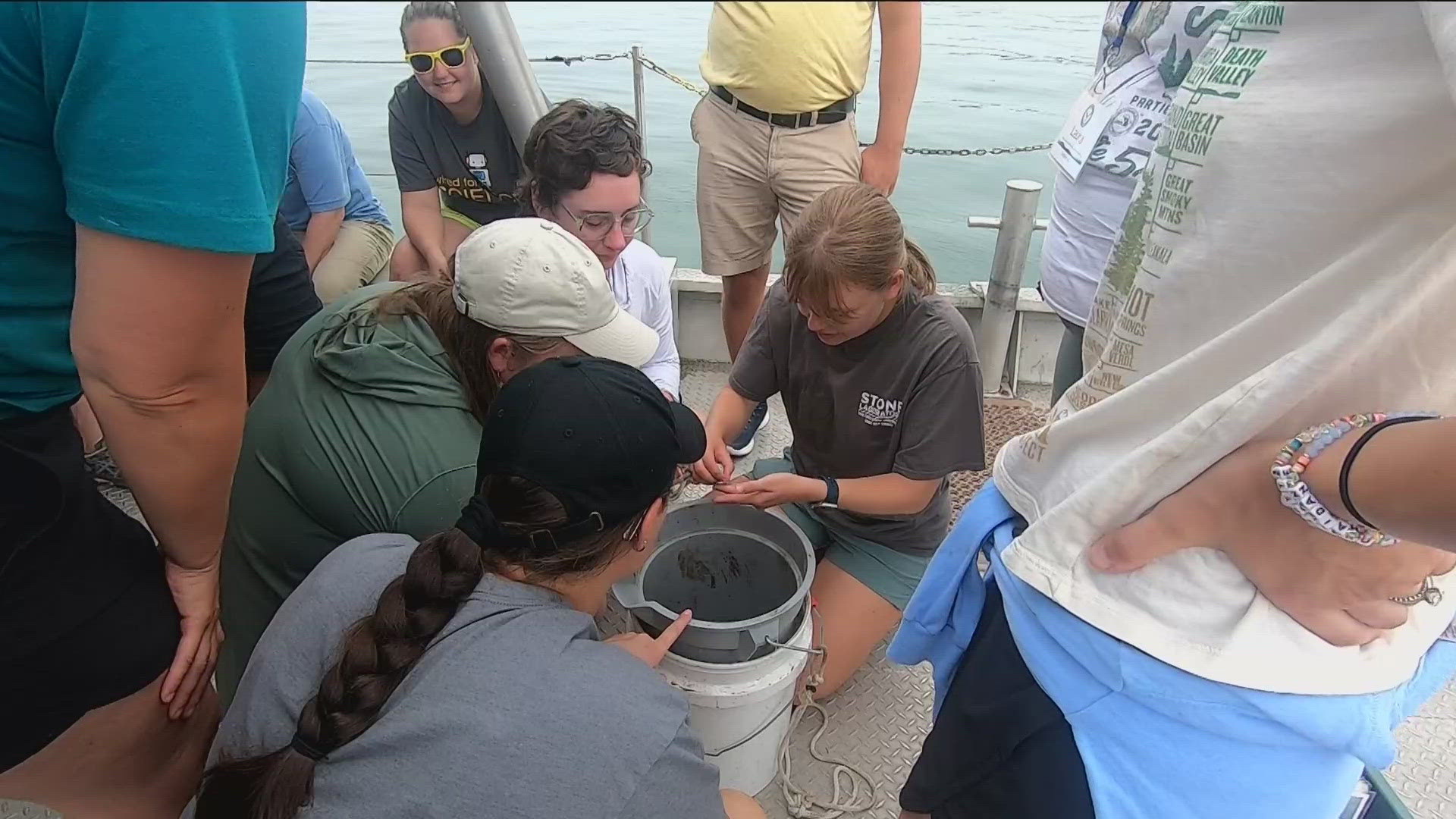PUT-IN-BAY, Ohio — Every summer, the Shipboard Science Workshop is hosted through the Ohio Sea Grant and the Center for Great Lakes Literacy in partnership with the U.S. Environmental Protection Agency (EPA) and the National Oceanic and Atmospheric Administration (NOAA).
Through funding from the Great Lakes Restoration Initiative, educators spend a full week alongside researchers aboard the Lake Guardian, the U.S. EPA's research vessel.
From July 7-13, educators participate in the workshop with ten other educators from Illinois, Indiana, Michigan, New York and Pennsylvania with stops throughout the week, including Put-in-Bay at Stone Laboratory, Ohio State's island campus.
For one participant, this is not their first time on the boat.
"For me, it's a little special because my dad actually worked on the boat when I was a kid and he would talk about it when I was growing up. For a while, I forgot about it and then when I went into working at Imagination Station and more informal education, it came back up again," Amanda Miller, experience manager at the Imagination Station said, "Now, he's back on the boat again."
She said her journey with the Ohio Sea Grant began years before her career all because of her dad.
"When I visited the boat as a kid it was like, 'This is science, this is what I want to do,' and it kind of sparked my journey into the scientific world and environmental science a lot," Miller said. "Now to be able to do that and be on the same boat as my dad working? It's been a super awesome dream for me. I'm so excited."
On the boat, Miller said the group focused on the epilimnion and the hypolimnion, stratified layers of water that reflect the health of the lake, along with microplastics, invasive species and benthic organisms.
"We did four, five sets of sampling yesterday mostly related to the harmful algal blooms. We're in the cyanobacteria group. We're really looking at the microcystis," Miller said. "So we've been taking samples and we've been looking at them under the microscope to identify what we can see in there."
One local STEM teacher at Hull Prarie in Perrysburg, Ethan Jessing, was also in attendance.
Jessing said he first found out about the program through a local conservation group.
"I've worked with the Lucas County Soil and Water Conservation District in quite a few capacities. They actually sent me a flyer of information about this and thought it would be up my alley," Jessing said. "I also have a colleague that I work with who's been on this ship before and they said it kind of changed their perspective on how to teach science."
Jessing said they've learned from instructors that pollution in the lake is a combination of factors.
"What ends up happening is people use products with phosphorus or perhaps nitrogen even that might run off and deposit lots of minerals into our lake which causes the eutrophication of the water and that's what ends up producing the algae that gives us bad water and the toxins," Jessing said.
Throughout the trip, the group went to different areas of the lake, taking samples for analysis.
"We have been touring Lake Erie and taking samples of algae and microplastics, along with analyzing water and surface samples and bottom samples for benthic organisms," Jessing said. "It's incredibly detailed. There's a lot of moving parts to it, but it's been really fun so far."
Jessing said much of the science is microscopic and you might not think things are happening on a major scale.
"We don't think about it. There are things that are big and are quick which captures the attention of the public," Jessing said. "But when we say the Great Lakes are one of the best sources of fresh water and truly a gem of our region, they are being destroyed from human action."
As educators, Miller said they're taking the experience to learn in order to teach others.
"As a researcher and doing education, we've been really switching back and forth between being the student on the ship and working with the researchers who are the experts," Miller said. "But also putting on our teacher hats a little bit and asking, 'OK, how can I use this with my students?'"

